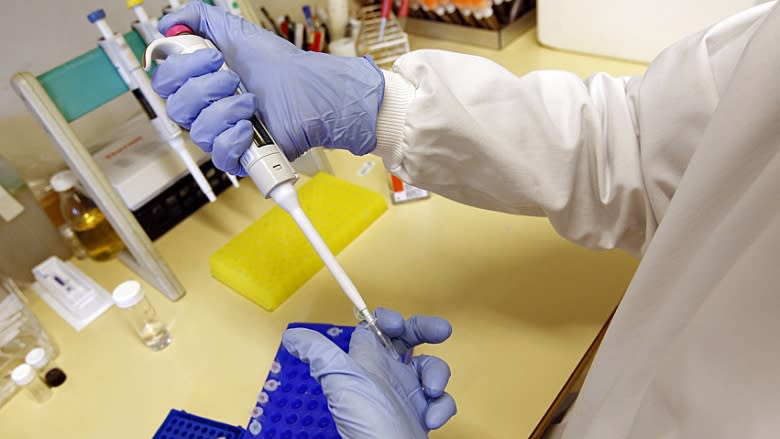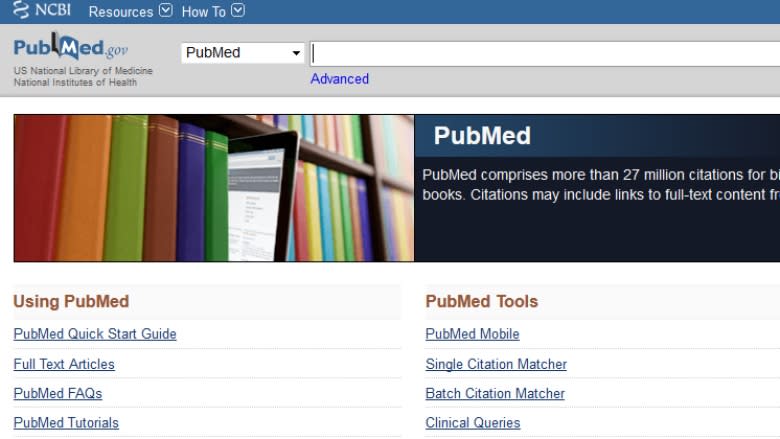Second Opinion: Million-dollar drug flops
Second Opinion is a vital dose of the week's news in health and medicine from reporters Kelly Crowe and Darryl Hol.
'World's most expensive drug' flops
It turns out that the world's most expensive drug couldn't make any money. That's because Glybera — with a jaw-dropping $1-million price tag — has been used on just one patient since being approved by European regulators in 2012.
This week, uniQure, the company that makes the drug, announced it will not be renewing its five-year marketing authorization which expires in the fall, effectively taking the drug off the market.
It wasn't long ago that Glybera was hailed as the Western world's first successful gene therapy, said to cure an extremely rare genetic disorder that clogs the blood with fat. Just one set of injections to the leg could replace faulty genes with ones that worked.
But as MIT Technology Review reported last year, the data for Glybera "wasn't rock-solid." Part of the problem is that it's impossible to conduct large-scale trials when so few people have the disorder.
Questions about the drug's efficacy were the problem, not the price tag, according to University of Calgary economist Aidan Hollis. "This, combined with really high prices, plus rarity, seemed like the kiss of death," he told us.
He notes that the sky-high price tag might seem more reasonable when you consider the drug is only required once. There are other drugs that cost hundreds of thousands of dollars per patient per year and must be administered indefinitely.
Mark Tarnopolosky, a researcher at McMaster University in Hamilton, says that Glybera's failure is a cautionary tale but only for ultra-rare diseases, where the number of potential patients is extremely low.
He points out that drug companies are still pursuing gene therapies for more common disorders like Duchenne muscular dystrophy and spinal muscular atrophy. There are late-stage trials underway for both diseases.
Who paid for that study?
It's a question that isn't always easy to answer. Even though more and more journals require a conflict-of-interest statement explaining how the research was funded and whether the authors have any ties that might bias their findings, the disclosure is normally tucked near the bottom of the original article, in fine print.
PubMed is changing that. The massive database includes summaries of more than 26 million health and medical articles, and has become a go-to resource for health professionals, scientists, journalists and the general public. And now it's including conflict-of-interest statements with those summaries.
Joyce Backus, associate director of library operations at the National Library of Medicine, which oversees PubMed, said it will be a while before all publishers begin submitting the information. But already nearly 80,000 summaries have been updated with conflict-of-interest details.
Backus said the change was prompted by a letter from the Center for Science in the Public Interest, in which 62 scientists and physicians and five U.S. senators (all of them Democrats) called for the disclosure.
She added that conflicts of interest don't necessarily mean the research is flawed, but the new information is about increasing transparency.
"All of us have biases and conflicts," she said. "It's just about the scientists being clear about where the funding is coming from and other biases and conflicts that might affect the science."
First new antibiotic in 30 years? Not exactly
The health hype was in overdrive this week when media reported that Winnipeg researchers had discovered the "first new antibiotic in 30 years." The B-word (breakthrough) was tossed around by both reporters and the scientists themselves, who claimed they had developed a new "drug" that could fight some of the nastiest bugs without harming human cells.
The research is important because the world is desperate for new antibiotics And it's great to hear about promising Canadian science. But media headlines reporting the discovery of a "new antibiotic" this week were misleading.
So what really happened?
The researchers at St. Boniface Hospital tested a proprietary compound (they've applied for a patent) on bacterial and human cells in a Petri dish. And while it's true that the compound appears to kill bacteria through a new mechanism, the compound has never been tested on a living creature.
One independent researcher told us that there are lots of compounds that can kill bacteria in a Petri dish, but the big hurdle is finding one that works in an animal model without killing the animal.
Other hurdles include proving that the compound works the way they think it does through replication by independent researchers. Then there's the decade-long journey through the treacherous drug development pipeline, where many promising compounds fail because they're too toxic in humans or they don't work as well as existing drugs or no drug company is willing to invest millions of dollars.
Would you like these stories and others delivered to your inbox every Saturday morning? Subscribe to Second Opinion.



